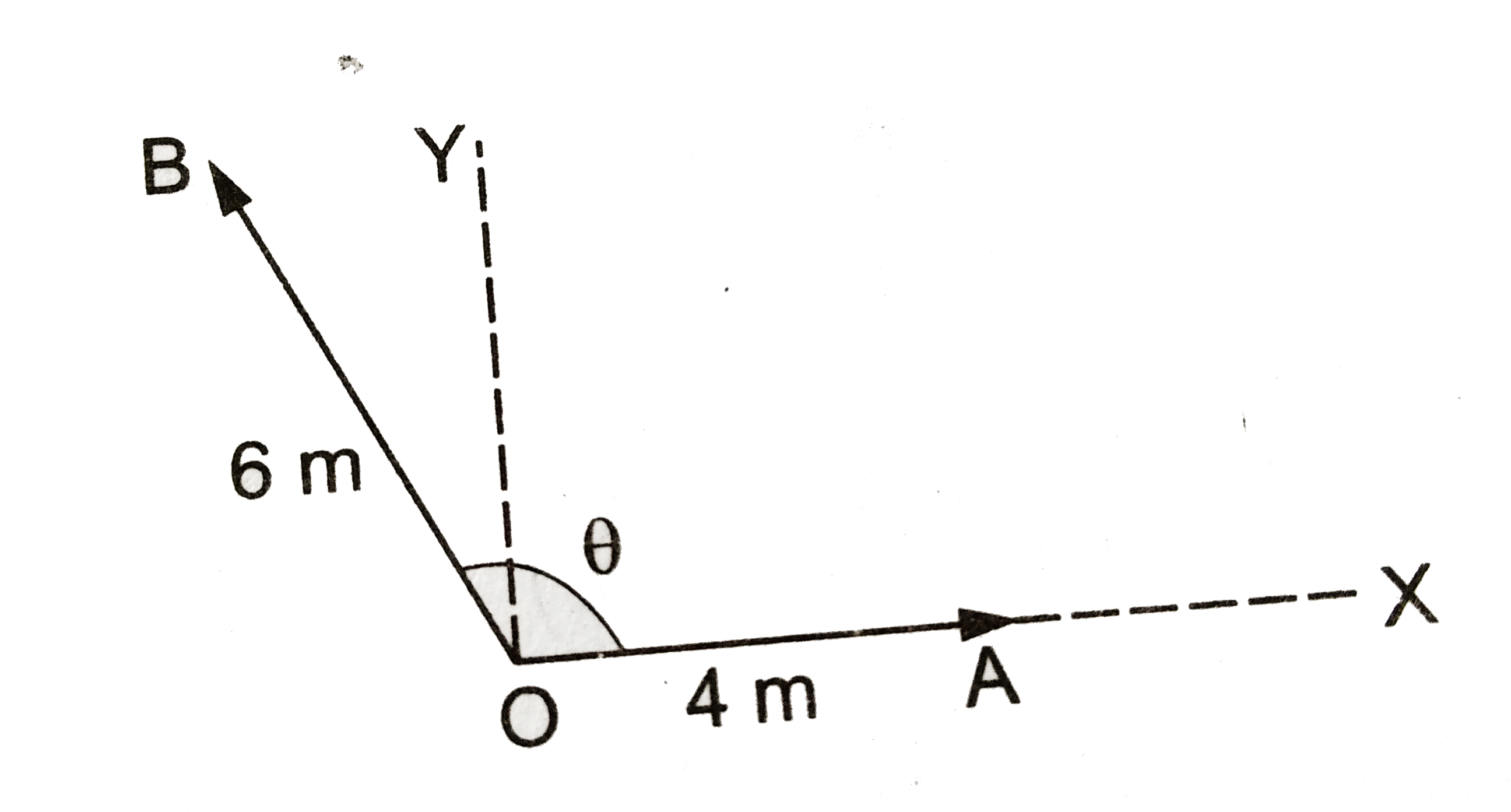The resultant →Pand→Q is perpendicular to →P. What is the angle between →Pand→Q?
cos−1(PQ)
cos−1(−PQ)
sin−1(PQ)
sin−1(−PQ)
The correct Answer is:B
To solve the problem, we need to find the angle between the vectors →P and →Q given that their resultant →R=→P+→Q is perpendicular to →P.
1. Understanding the Condition:
We know that the resultant vector →R is given by:
→R=→P+→Q
Since →R is perpendicular to →P, we can use the dot product property:
→R⋅→P=0
2. Expanding the Dot Product:
Substitute →R into the dot product equation:
(→P+→Q)⋅→P=0
This expands to:
→P⋅→P+→Q⋅→P=0
3. Using Magnitudes:
Let P=|→P| and Q=|→Q|. The dot product →Q⋅→P can be expressed as:
→Q⋅→P=|→Q||→P|cos(θ)
where θ is the angle between →P and →Q.
4. Substituting Back:
Now, substituting this back into the equation gives:
P2+QPcos(θ)=0
5. Rearranging the Equation:
Rearranging the equation leads to:
QPcos(θ)=−P2
Dividing both sides by QP (assuming Q≠0):
cos(θ)=−PQ
6. Finding the Angle:
To find the angle θ, we take the inverse cosine:
θ=cos−1(−PQ)
Conclusion:
The angle θ between the vectors →P and →Q is given by:
θ=cos−1(−PQ)
We know that the resultant vector →R is given by:
→R=→P+→Q
Since →R is perpendicular to →P, we can use the dot product property:
→R⋅→P=0
Substitute →R into the dot product equation:
(→P+→Q)⋅→P=0
This expands to:
→P⋅→P+→Q⋅→P=0
Let P=|→P| and Q=|→Q|. The dot product →Q⋅→P can be expressed as:
→Q⋅→P=|→Q||→P|cos(θ)
where θ is the angle between →P and →Q.
Now, substituting this back into the equation gives:
P2+QPcos(θ)=0
Rearranging the equation leads to:
QPcos(θ)=−P2
Dividing both sides by QP (assuming Q≠0):
cos(θ)=−PQ
To find the angle θ, we take the inverse cosine:
θ=cos−1(−PQ)
The angle θ between the vectors →P and →Q is given by:
θ=cos−1(−PQ)
Similar Questions
If →P.→Q=PQ, then angle between →P and →Q is
View SolutionThe resultant of vectors −−→OAand−−→OB is perpendicular to −−→OA. Find the angle AOB.
 View Solution
View SolutionWhat is the angle between (→P+→Q) and (→P×→Q)?
View SolutionThe vector (→a+3→b) is perpendicular to (7→a−5→b) and (→a−4→b) is perpendicular to (7→a−2→b). The angle between →a and →b is :
View SolutionIf ∣∣→P+→Q∣∣=∣∣→P−→Q∣∣ , find the angle between →P and →Q.
View SolutionTwo vectors →a and →b are such that ∣∣→a+→b∣∣=∣∣→a−→b∣∣. What is the angle between →a and →b?
View SolutionGiven that P=Q=R. If →P+→Q=→R then the angle between →P and →R is θ1. If →P+→Q+→R=→0 then the angle between →P and →R is θ2. The relation between θ1 and θ2 is :-
View SolutionIf →a and →b are two vectors such that ∣∣→a×→b∣∣=→a.→b, then what is the angle between →a and →b.
View SolutionTwo vectors →P and →Q are added, the magnitude of resultant is 15 units. If →Q is reversed and added to →P resultant has a magnitude √113 units. The resultant of →P and a vector perpendicular →P and equal in magnitude to→Q has a magnitude
View SolutionGiven that →A+→B=→C and that →C is perpendicular to →A Further if ∣∣→A∣∣=∣∣→C∣∣, then what is the angle between →A and →B
View Solution

